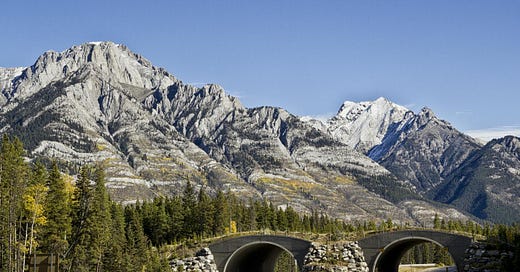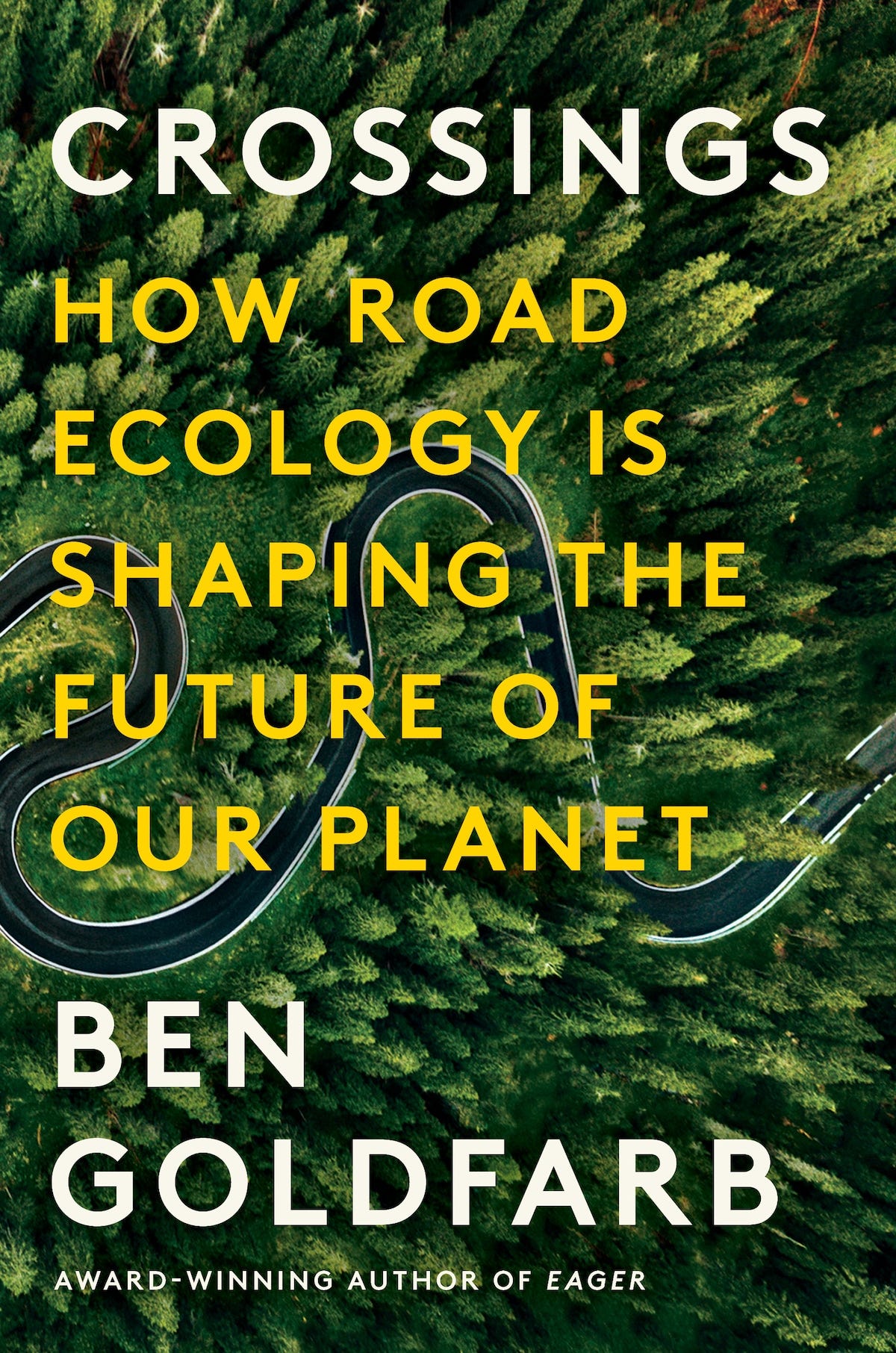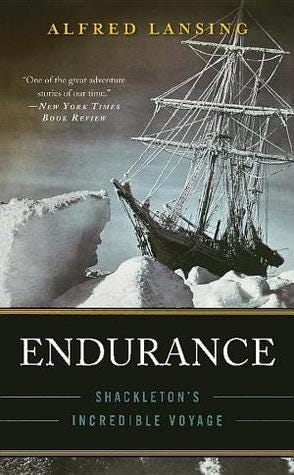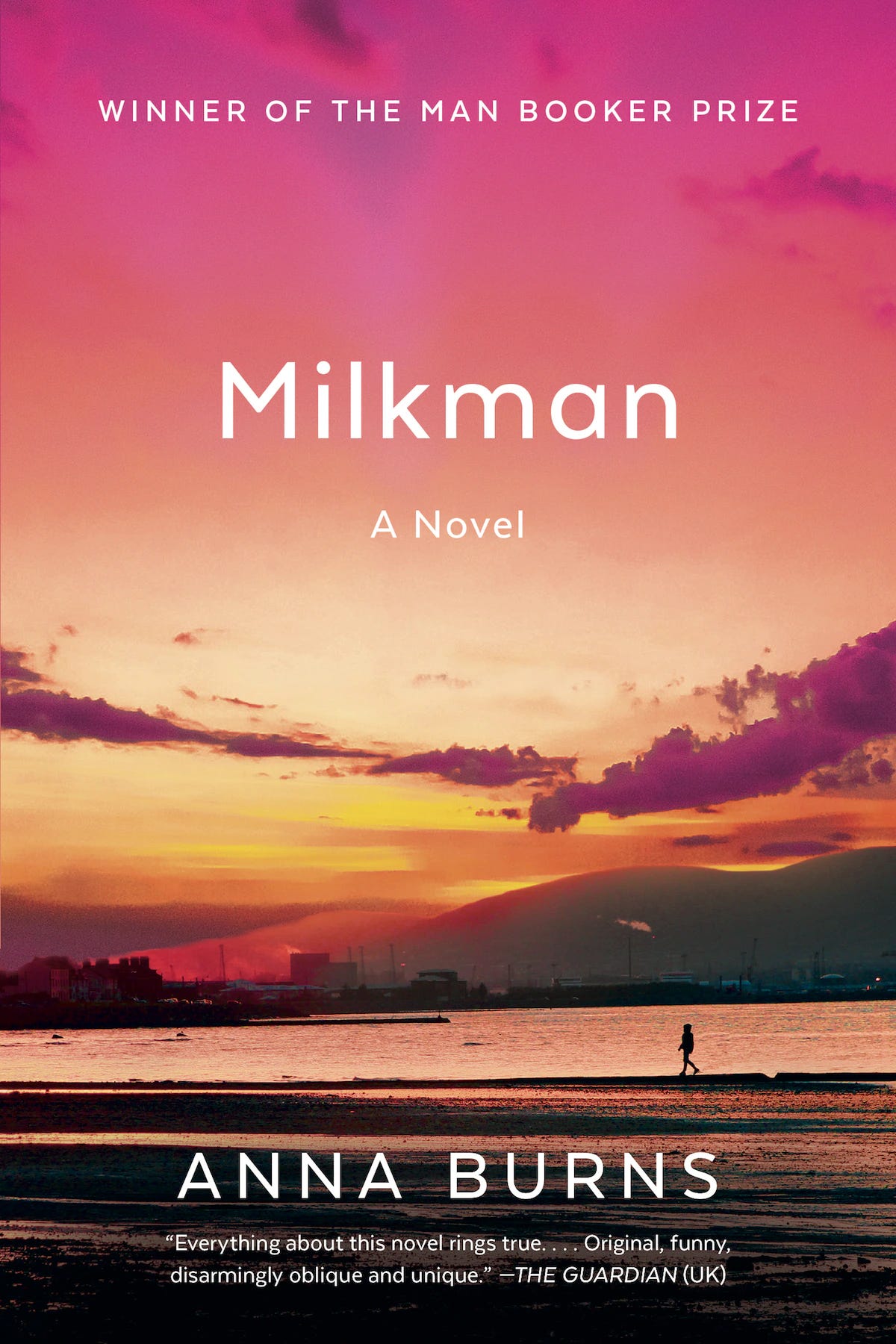This past week, I read three pretty exceptional nonfiction books and finished a slog of a literary fiction novel. I am going to discuss the nonfiction works first and then dive into Milkman!
Nonfiction:
Crossings: How Road Ecology Is Shaping the Future of Our Planet by Ben Goldfarb
Forty million miles of roads wrap around the world. In Crossings, Goldfarb explores how roadways damage natural habitats and how they might be a better fit for the environment. He focuses on interesting stories from Brazil to Australia to California to the Netherlands. “To us, roads signify connection and escape; to other life forms, they spell death and division,” Goldfarb writes. “Name your environmental ill — dams, poaching, megafires — and consider that roads kill more creatures with less fanfare than any of them.”
Road ecologists step in not only to study the impact of roads but also to provide solutions. Goldfarb walks us through some of their ideas — overpasses in Banff for bears, a massive land bridge over LA’s 101 freeway for mountain lions, underpasses for mule deer in Wyoming, modifying culverts for salmon in Oregon, and literally carrying turtles in Tupperware containers across freeways in Florida. As Goldfarb points out, these solutions are relatively low-cost (particularly when you consider the cost of injuries and damages of car-wildlife collisions).
Road ecology can be a pretty dry topic—and this book is data-dense—so this might sound funny, but Crossings is fascinating. It reads like a series of interesting New Yorker environmental articles.
“How roads are destroying basically all living things” is also not a particularly cheery topic, but Goldfarb writes in an engaging way and still manages to be optimistic about solutions. To be fair, I am probably more interested in this topic than the average person (I have lived in Wyoming, Alaska, and Southern California and still remember this article on CA mountain lions). Nevertheless, I highly recommend this book to anyone remotely interested in this topic.
Rating: 4.3/5
Genre: Nonfiction (Environment)
Page count: 384 pages
Audio: 11 hours 52 minutes
Endurance: Shackleton’s Incredible Voyage by Alfred Lansing
Published in 1959, Endurance tells the harrowing story of Ernest Shackleton’s famous Antarctic expedition. In 1914, Shackleton and a crew of twenty-seven men set sail for Antarctic waters on the Endurance. They planned to be the first to cross the continent, but early on in the expedition, the Endurance became locked in a pack of sea ice. The ice eventually crushed the ship. More than twelve hundred miles lay between them and the nearest outpost of civilization. Lansing follows their harrowing attempt to reach safety.
Endurance is one of the best narrative nonfiction books I’ve ever read. It’s gut-wrenching, suspenseful, thrilling, and often unbelievable. I actually teared up a bit at the end. I was also shocked that this book is less than 300 pages, especially given the mountain of archival evidence Lansing used. Nonfiction writers often add too many asides that detract from the overall story. Lansing ruthlessly selected his material here — choosing the most illustrative moments of their journey and cutting out the clutter. It is definitely worth a read.
Rating: 5/5
Genre: Nonfiction (Historical Narrative)
Page count: 282 pages
Audio: 10 hours and 20 min
Movie/TV pairings: The Lost City of Z; Shackleton (a BBC mini-series from 2002); The Endurance (documentary)
Still Life with Bones: Genocide, Forensics, and What Remains by Alexa Hagerty
In Still Life with Bones, Alexa Hagerty recounts her experience as an anthropology PhD candidate working in Guatemala and Argentina at the excavation sites of mass graves. She trained with forensic teams to find, clean, and identify bones. They then analyzed the DNA to try to identify the victims and hopefully return them to their families.
Still Life with Bones is a blend of personal interviews, historical overviews, and Hagerty’s personal reflections. She weaves in the history of repressive regimes and atrocities in the two countries: 200,000 dead in La Violencia in Guatemala and 30,000 desaparecidos in Argentina’s “Dirty War.” Hagerty also reflects on grief, the ritual of death, and the legacy of violence. Political opponents and dissidents literally “disappeared;” many of their bodies were never recovered. People were buried in unmarked graves in Guatemala and thrown from planes into the ocean in Argentina. How do you grieve when there is no body to bury? Or even an acknowledgment of death?
This book was well-written and researched; Hagerty incorporates and summarizes an incredible amount of information (particularly when she discusses Argentina’s history). It’s not easy to write about violence or synthesize this topic, and I thought that the hybrid format of narrative nonfiction, her emotional reflections, and journalism was very effective. My only criticism was that I wish she had summarized Guatemala’s history. La Violencia is arguably less well-known than Argentina’s “Dirty War.” She spends considerable time synthesizing Argentina’s history, and I wish she had added some more historical context for Guatemala as well. However, that critique is minor, and I definitely recommend this book to anyone interested in this topic.
Rating: 4.4/5
Genre: Nonfiction
Page count: 320 pages
Literary Fiction:
Milkman by Anna Burns
Milkman follows an eighteen-year-old girl growing up in Belfast in the 1970s during the Time of Troubles (although the city and country are unnamed in the book). None of the characters are named, and the book is written as an introspective monologue (almost like stream-of-consciousness but not quite).
One day, a forty-one-year-old married paramilitary nicknamed Milkman begins harassing the narrator (showing up at her classes and following her as she runs). She does not like his attention, but Milkman’s fixation with her makes her the subject of rumors in town. Everyone assumes that she’s having an affair with him. When she begins seeing a young man (she calls him “almost boyfriend”), people gossip that she’s cheating on Milkman. The young man might be in trouble. That’s basically the plot.
I knew three things about Milkman when I started reading it: It is set in Northern Ireland, won the Booker Prize in 2018, and has a cool pink cover. I primarily chose to read it because of the setting. This past year, I read and loved two books set in Northern Ireland (Say Nothing and Trespasses). I had no idea what I was in for. Milkman is a tough read. The sentences are extremely long, and paragraphs stretch over pages. The chapters are also unwieldy (I am somewhat basic and prefer 30-page chapters, sorry).
When I was a little more than halfway through the book, I looked up the audiobook and was somewhat surprised to see that it had relatively high ratings. I ended up switching to audio for the rest of the book. I think it works better (if at all) as an audiobook. The narrative and grammatical structures aren’t as distracting, and you can really get lost in the narrator’s inner monologue.
Here’s an excerpt from Milkman to give you a sense of the writing style:
No matter the reservations held then — as to methods and morals and about the various groupings that came into operation or which from the outset already had been in operation; no matter too, that for us, in our community, on ‘our side of the road,’ the government here was the enemy, and the police here was the enemy, and the government ‘over there’ was the enemy, and the soldiers from ‘over there’ were the enemy, and the defender-paramilitaries from ‘over the road’ were the enemy and, by extension — thanks to suspicion and history and paranoia — the hospital, the electricity board, the gas board, the water board, the school board, telephone people and anybody wearing a uniform or garments easily to be mistaken for a uniform also were the enemy, and where we were viewed in our turn by our enemies as the enemy — in those dark days, which were the extreme of days, if we hadn’t had the renouncers as our underground buffer between us and this overwhelming and combined enemy, who else, in all the world, would we have had?
Basically, it sort of gives you a headache. After I finished Milkman, I read that Kwame Anthony Appiah, the chairman of the Booker judges, commented: “I spend my time reading articles in the Journal of Philosophy, so by my standards this is not too hard.” Lol. Is that supposed to be high praise?
But I didn’t completely hate it! Burns recreates that feeling of state oppression and paranoia through the lens of adolescence and sexual harassment. Her encounters with Milkman are fraught, but he never touches her or even really looks directly at her. The narrator struggles to verbalize what’s happening with Milkman. “At the time, age eighteen,” she says, “having been brought up in a hair-trigger society where the ground rules were — if no physically violent touch was being laid upon you, and no outright verbal insults were being leveled at you, and no taunting looks in the vicinity either, then nothing was happening, so how could you be under attack from something that wasn’t there?” Like Milkman’s harassment, language is insufficient to explain the claustrophobia and fear of living during the Troubles.
I also like how Burns plays with language and mirrors censorship through the narrator’s refusal to name people or things. At one point, the narrator reflects on how everything has become politically charged in “this psycho-political atmosphere with its rules of allegiance, of tribal identification, of what was allowed and not allowed . . . . Divisions extend to food and drink. The right butter. The wrong butter. The tea of allegiance. The tea of betrayal.” Everything is regarded with suspicion.
I’m somewhat conflicted about this book. I see its merits, but I don’t think Milkman is as experimental as it tries to be. I also wanted the language to be more poetic than it was. There are better books out there (and better books on this particular period). Ultimately, I don’t think this book is worth the effort, and I wouldn’t recommend it to a friend.
Rating: 3.5/5
Genre: Historical Fiction; Literary Fiction
Page count: 352 pages
Audio: 14 hours and 11 minutes
Articles I can’t stop thinking about:
Dr. Saul Newman (an Oxford data scientist) recently won a prize at MIT for debunking “Blue Zones.” He’s analyzed the data behind the so-called “Blue Zones” (like Okinawa, Japan; Sardinia, Italy; and Loma Linda in California), where many centenarians and supercentenarians supposedly live. Basically, the data seems to be incredibly flawed — The world’s oldest man has three birthdays.
My copy of the new Sally Rooney book (Intermezzo) is in the mail, and I can’t stop reading the reviews.
What I’m cooking:
My husband and I grilled some chicken thighs on Monday night. This recipe is our go-to marinade for chicken — it’s delicious and works with many different types of meals (for every pound of meat: 1 tsp cumin, 1 tsp smoked paprika, 1 tsp coriander, 1 tsp salt, a drizzle of high smoke point oil, and 3 minced garlic cloves).









